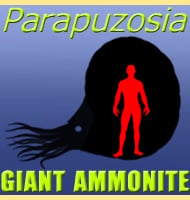In Depth
Doryaspis was a jawless fish that swam in the oceans of the early Devonian, and one that had an unusual body shape. Like others, it had a rounded box-like body with a long flexible tail, but it also had a long, thin pointed snout projecting from the front, as well as two more thin spike-like projections projecting from the sides of the back of the main body at near right angles from the forward snout, while also being curved slightly forward.
The function of these three spikes is uncertain, but the rear spikes that pointed to the sides may have acted like hydroplanes to help maintain level swimming. The front spike may have been used to stir up soft sediment to expose small invertebrates and morsels of organic matter that could then be sucked into the jawless mouth.
These spikes of Doryaspis have long been noted as being serrated, but the discovery and naming of a new species has brought the realisation that not all Doryaspis had serrated spikes. The spikes of D. arctica are noted as being smooth, which means the serrated snout and spikes of the type species D. nathorsti are either for inter species recognition, or a feature of a more specialised lifestyle.
Further Reading
- The genus Doryaspis White (Heterostracti) from the lower Devonian of Vestspitsbergen,Svalbard, - V. I. N. C. E. NT Noel. PERN�GRE, 2001.









